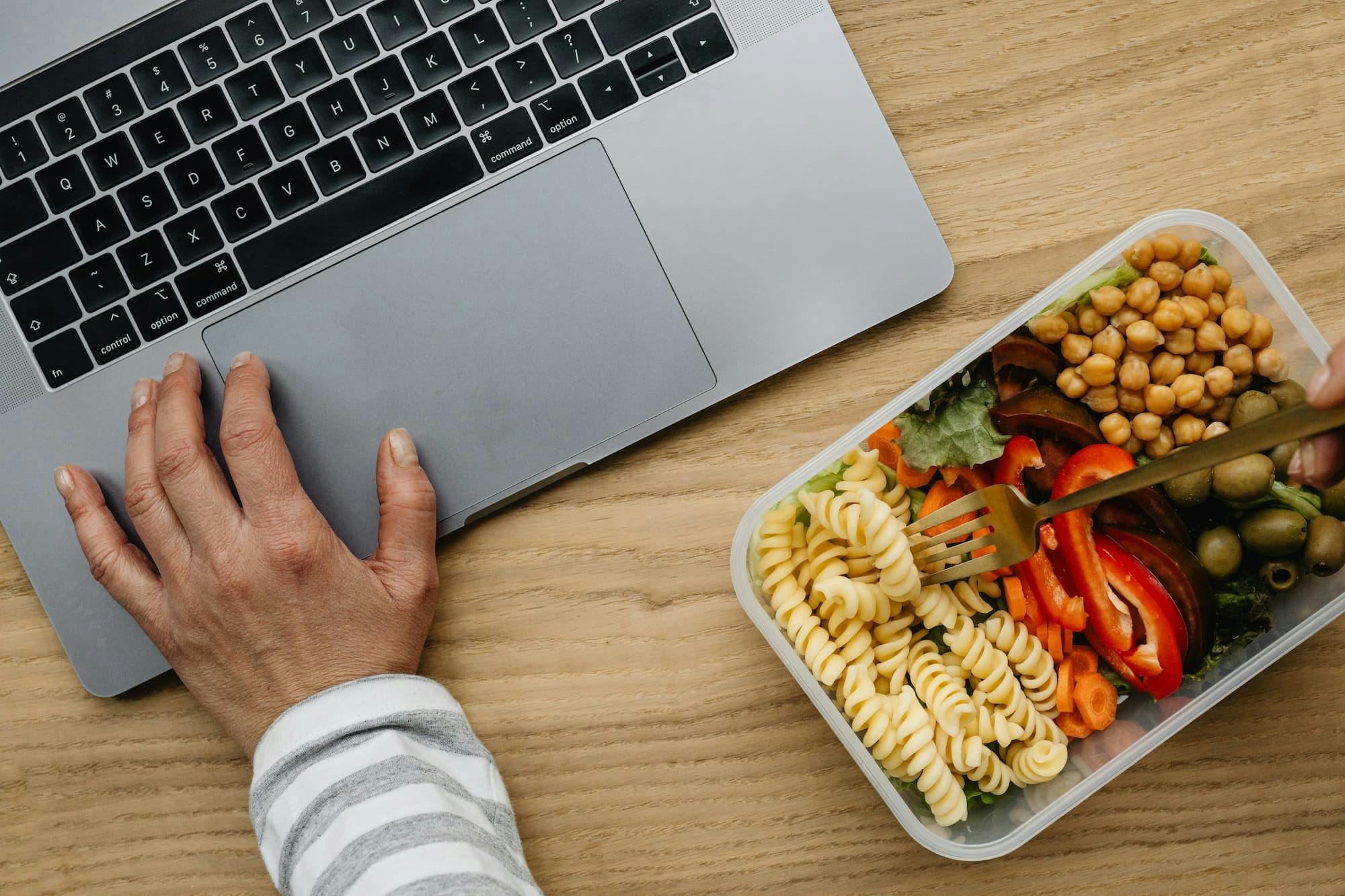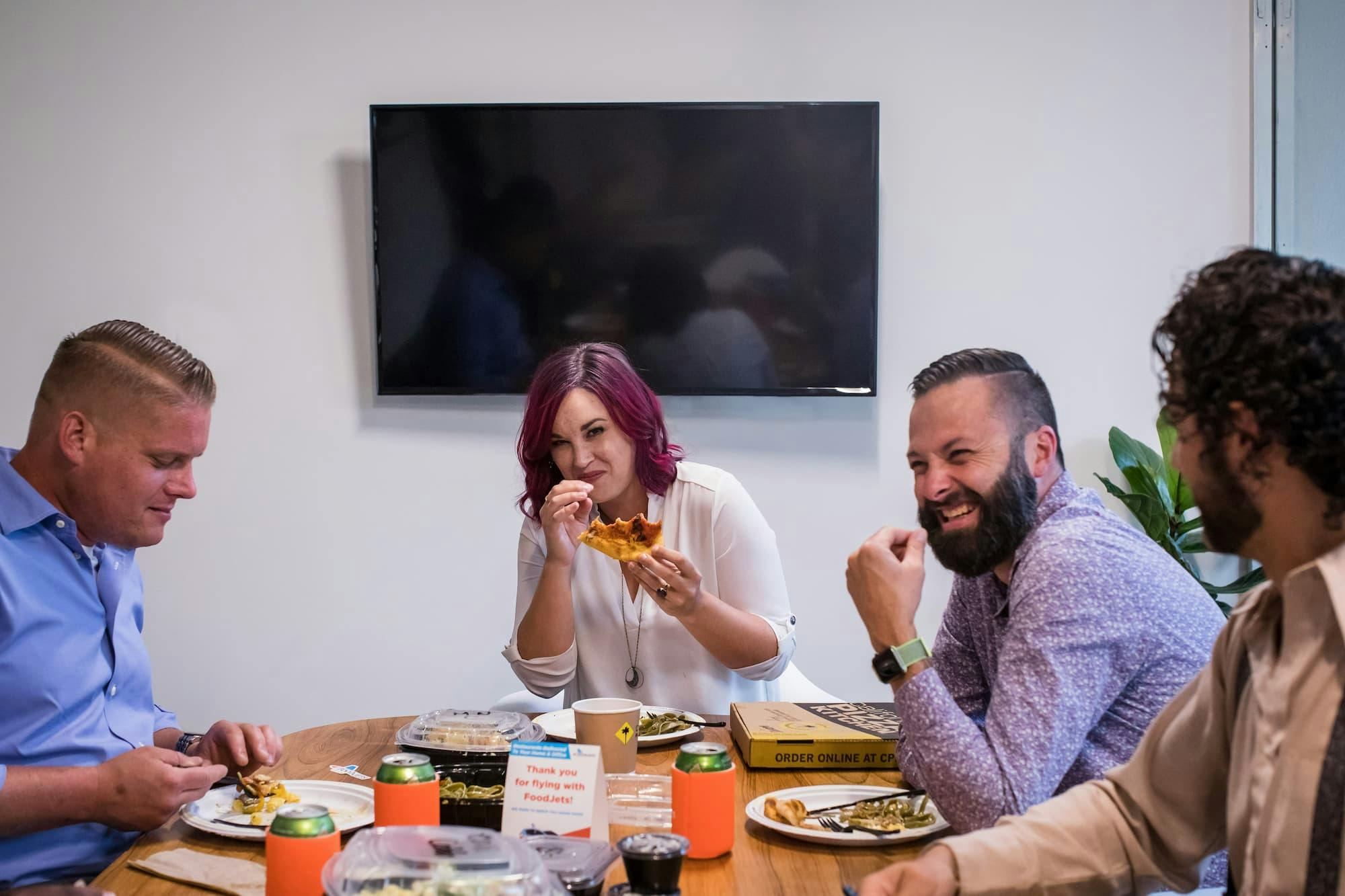Employee lunch programs offer structured meals with added perks like convenience and team bonding, while traditional allowances give flexibility—each delivers value in different ways.
Employee lunch programs vs. traditional food allowances — if you’ve ever had to pick between two, you know it's not just about what's for lunch. It's about what fits your team, your budget, and the kind of experience you want to create at work.
Some companies go with lunch stipends or food reimbursement options, giving employees the freedom to choose. Others prefer modern lunch programs with scheduled office food delivery, aiming to bring people together over a shared meal. Each path has its perks, and its limitations.
In this article, we'll unpack the lunch stipends pros and cons, talk about how food connects to employee wellness, and help you figure out which solution delivers more value. And the best part? Whether you lean toward structure or flexibility, Picnic is ready to help you manage it all—making food at work less of a chore, and more of a reason to connect.
What are Employee Lunch Programs?
Think about the last time lunch turned into the highlight of your workday. Maybe it was a shared table with teammates, a favorite meal delivered right on time, or just one less thing to worry about during a busy shift. That's exactly what employee lunch programs aim to create, moments of ease, connection, and through food.
These programs are a structured way for companies to offer daily or weekly meals, either through office deliveries, in-house catering, or curated food credits. And it's not just about convenience. According to data from DoorDash, employees who receive meal benefits report a 91% job satisfaction rate, while satisfaction drops to 78% among those who don’t.
If you're curious about how to set up in your company, we've got you covered. Check out our guide on starting a workplace lunch program for practical tips on getting it right from the start.
And... What are Traditional Food Allowances?
If lunch programs are about structure and shared experiences, traditional food allowances are all about flexibility. With this model, companies give employees a set amount of money—daily, weekly, or monthly—to spend on meals however they choose. It might come in the form of a lunch stipend, food reimbursement, or even digital lunch credits.
This setup can be appealing for teams that are remote, always on the move, or simply prefer to decide when and where to eat. It also gives employees more control, which can be considered a sign of trust.
But it's not without its trade-offs. Without a central system, meal benefit management can get messy for HR, and some of the community-building that happens when teams eat together might be lost.
Bring the perfect lunch solution to your office.
Picnic will deliver lunch from 50+ restaurants without fees or tips, directly to your office — available in all major US cities


Read more: What Is a Meal Allowance and Why Is It Important for Employee Satisfaction?
What's the Difference Between Employee Lunch Programs and Traditional Food Allowances?
Both employee lunch programs and traditional food allowances offer valuable ways to support your team—but they serve different purposes and create different experiences. Below, we break down how these two models compare when it comes to experience, cost, logistics, and long-term fit.
Employee Experience and Engagement
Employee lunch programs create opportunities for shared moments. When meals are delivered to the workplace or offered through curated menus, employees don’t just eat—they connect. These programs encourage team-building, save time, and support healthier choices through better meal planning.
Traditional food allowances, such as lunch stipends or food reimbursement, give employees more freedom to choose what, when, and where to eat. However, this flexibility comes at the cost of social interaction—there’s no built-in opportunity for teams to gather and bond over a meal.
Budget Control
With lunch programs, companies often partner with a workplace lunch provider like Picnic to set clear budgets and order limits in advance. This offers predictable costs and fewer administrative headaches, especially when managing group orders or delivery schedules.
Allowances, on the other hand, may involve variable costs and more complex meal benefit management. Employees manage their own spending, which can create inconsistencies and make it harder for HR or finance to track and optimize expenses.
Taxes and Fees
Employee lunch programs are typically tax-deductible for the company and don’t count as taxable income for the employee — making them both cost-effective and low on paperwork.
Traditional allowances, however, may be subject to tax depending on how they’re structured and used. For example, food expenses tied to business travel often fall under stricter rules and require detailed reporting, which can increase administrative work and compliance risks.
Scalability and Customization
As companies grow, the need for flexible food options becomes even more important. Lunch programs can scale easily through centralized systems and offer built-in customization, like dietary filters or individual order preferences. They’re also easier to roll out consistently across hybrid or in-office teams.
Food allowances, while flexible by nature, put the burden of choice and cost management on employees. Over time, this can lead to less consistency and lower overall engagement, especially in teams where connection and routine are valued.

Read more: 5 Benefits of Free Food at Work: How It Improves Employee Wellbeing?
So, What's the Best Solution for My Business?
There's no one-size-fits-all answer, but that's the good news. The right choice between employee lunch programs vs. traditional food allowances depends on your team's routine, your company culture, and what kind of impact you want these food perks to have.
If your goal is to bring people together, promote healthy eating and simplify logistics, a structured workplace lunch program might be your best bet. It supports both in-office routines and hybrid setups with consistency and ease. But if flexibility is a must, for example for remote teams or field staff, lunch stipends or food reimbursements can give employees more autonomy while still offering value.
The key is knowing that you don't have to choose blindly, or manage all manually. With a provider like Picnic, you can explore a modern lunch program, adjust it as your business evolves, and focus on what matters most: offering meaningful food perks for employees that truly make a difference.
Have You Ever Tried Picnic? It's Your Chance!
If you've ever tried managing lunch logistics for an entire team, you know it's a lot. Multiple diets, different schedules, tight budgets… and somehow, someone’s order still gets missed. That’s exactly the kind of stress Picnic was built to eliminate.
Picnic isn't just another food delivery app. It's a dedicated employee lunch program designed for workplaces that want to offer real value without the chaos. Meals are individually ordered, delivered together, and paid through one simple system, no fees, no tipping, and no spreadsheets.
And companies already using Picnic are feeling the difference:
"Finally, an office meal service that works! Picnic makes it so easy for our team to enjoy great food without the stress of planning. The flexibility and convenience are unmatched, and the team loves the variety!" — Sarah T.
"Our team loves Picnic! The meals are high-quality, the options are diverse, and the delivery is super reliable. It’s a game-changer for keeping our employees happy." — James M.
Curious to try it out? Get all the details on how it works.
How to Start with Picnic Step-by-Step
- Pick your schedule: decide which days your team will receive meals—whether daily, weekly, or just for special occasions.
- Set your budget: choose how much you want to cover per meal. Picnic’s system does the rest.
- Invite your team: each employee orders meals that match their preferences, dietary needs, and schedule.
- Meals arrive together: orders are delivered at the same time, directly to your workplace—no confusion, no missing lunches.
- Monitor and improve: use Picnic’s dashboard to track participation, spending, and feedback with ease.
Offering corporate lunch benefits doesn’t have to be complicated. With Picnic, it’s just good food, delivered smart.
Ready to Make the Shift?
Whether you’re rethinking how to offer food perks or simply tired of juggling receipts and reimbursements, now’s the perfect time to reimagine lunch at work. A well-designed employee lunch program can make a real difference—not just in how your team eats, but in how they feel about being part of your company.
If you’re ready to simplify your lunch benefits, create better daily experiences, and take one more thing off your to-do list, Picnic is here to help.
Request Picnic today and see how easy — and rewarding — it is to feed your team right.








